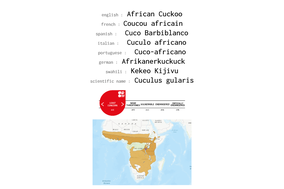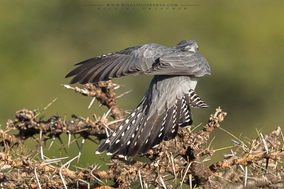- Homepage
- Bestiary
- Carnivores
- Pachydermata
- Birds of prey
- Bateleur
- Buzzard, Augur
- Buzzard, Common
- Eagle, African Crowned
- Eagle, African Fish
- Eagle, Black-chested Snake
- Eagle, Brown Snake
- Eagle, Long-crested
- Eagle, Martial
- Eagle, Steppe
- Eagle, Tawny
- Eagle, Wahlberg's
- Falcon, Amur
- Falcon, Lanner
- Falcon, Pygmy
- Goshawk, African
- Goshawk, Dark Chanting
- Goshawk, Eastern Chanting
- Goshawk, Gabar
- Harrier, African Marsh
- Harrier, Eurasian Marsh
- Harrier, Montagu's
- Harrier, Pallid
- Hawk, African Harrier
- Hobby, eurasian
- Kestrel, Common
- Kestrel, Grey
- Kestrel, Greater
- Kestrel, Lesser
- Kite, Yellow-billed
- Kite, Black-winged
- Eagle-owl, Verreaux's
- Owl, african scops
- Owl, Marsh
- Secretary Bird
- Sparrowhawk
- Vulture, Egyptian
- Vulture, Hooded
- Vulture, Lappet-faced
- Vulture, Palm-nut
- Vulture, Rüppell's
- Vulture, White-backed
- Vulture, White-headed
- Ongulates
- Antelope, sable
- Bongo
- Buffalo
- Bushbuck
- Bushpig
- Dik-dik, Kirk's
- Dik-dik, Günther's
- Duiker, common
- Duiker, Harvey's
- Eland
- Gazelle, Grant
- Gazelle, Thomson
- Gerenuk
- Giraffe, masai
- Giraffe, reticulated
- Giraffe, Rotschild's
- Hartebeest
- Hog, giant forest
- Impala
- Klipspringer
- Kudu, greater
- Kudu, lesser
- Oribi
- Oryx, east african
- Oryx, fringe-eared
- Reedbuck, Bohor
- Reedbuck, mountain
- Steenbok
- Suni
- Topi
- Warthog
- Waterbuck, common
- Waterbuck, defassa
- Wildebeest
- Zebra, Grevy
- Zebra, hybrid
- Zebra, plain
- Reptiles
- Waders and water birds
- Avocet pied
- Bittern, dwarf
- Coot
- Cormorant, long-tailed
- Cormorant, white-breasted
- Courser, Bronze-winged
- Courser, somali
- Courser, Temminck's
- Courser, three-banded
- Courser, Two Banded
- Crake black
- Crane, grey crowned
- Darter, african
- Duck, african black
- Duck, knob-billed
- Duck, white-backed
- Duck, white-faced whistling
- Duck, yellow-billed
- Egret, cattle
- Egret, great
- Egret, intermediate
- Egret, little
- Flamingo, greater
- Flamingo, lesser
- Goose, egyptian
- Goose, spur-winged
- Grebe, little
- Greenshank, common
- Gull, grey-headed
- Gull, sooty
- Hamerkop
- Heron, black
- Heron, black-headed
- Heron, goliath
- Heron, grey
- Heron, purple
- Heron, rufous-bellied
- Heron, squacco
- Heron, striated
- Night-heron, black-crowned
- Ibis, african sacred
- Ibis, glossy
- Ibis, hadada
- Jacana, African
- Lapwing, Senegal
- Moorhen, common
- Painted-snipe, greater
- Pelican, great white
- Pelican, pink-backed
- Plover, blacksmith
- Plover, black-winged
- Plover, caspian
- Plover, crowned
- Plover, kittlitz's
- Plover, long-toed
- Plover, ringed
- Plover, spur-winged
- Plover, three-banded
- Plover, wattled
- Pratincole, collared
- Ruff
- Sandpiper, common
- Sandpiper, green
- Sandpiper, marsh
- Sandpiper, wood
- Sandplover, greater
- Snipe, common
- Spoonbill
- Stilt
- Stint, little
- Stork, abdim's
- Stork, african openbill
- Stork, black
- Stork, marabou
- Stork, saddle-billed
- Stork, white
- Stork, woolly-necked
- Stork, yellow-billed
- Teal, common
- Teal, Hottentot
- Teal, red-billed
- Teal cape
- Tern, white-winged
- Tern, whiskered
- Thick-knee, spotted
- Thick-knee, water
- Terrestrial birds
- Bustard, black-bellied
- Bustard, buff-crested
- Bustard, Hartlaub's
- Bustard, kori
- Bustard, white-bellied
- Francoli, coqui
- Francolin, crested
- Francolin, Hildebrandt's
- Francolin, Jackson's
- Francolin, red-winged
- Francolin, Shelley's
- Guineafowl, helmeted
- Guineafow, vulturine
- Hornbill, southern ground
- Ostrich, masai
- Ostrich, somali
- Sandgrouse, black-faced
- Sandgrouse, chesnut-bellied
- Sandgrouse, yellow-throated
- Spurfowl, red-necked
- Spurfowl, yellow-necked
- Birds
- Apalis, yellow-breasted
- Babbler, arrow-marked
- Babbler, brown
- Babbler, northern pied
- Barbet, d'Arnaud's
- Barbet, red-and-yellow
- Barbet, red-fronted
- Batis chin-spot
- Bee-eater, blue-cheeked
- Bee-eater, little
- Bee-eater, cinnamon-chested
- Bee-eater, eurasian
- Bee-eater, olive
- Bee-eater, somali
- Bee-eater, white-throated
- Bee-eater, white-fronted
- Bishop, yellow
- Bishop, Zanzibar red
- Bishop, yellow-crowned
- Boubou, tropical
- Boubou, slate-coloured
- Bulbul
- Bush-shrike, sulphur-breasted
- Bunting, cinnamon-breasted rock
- Bush-shrike, rosy-patched
- Camaroptera, grey-backed
- Canary, brimstone
- Canary, yellow-crowned
- Chat, alpine
- Chat, anteater
- Chat, cliff
- Chat, sooty
- Chatterer
- Cisticola, Aberdare
- Cisticola, desert
- Cisticola, Hunter's
- Cisticola Lyne's
- Cisticola, rattling
- Cisticola, stout
- Cisticola, winding
- Citril, african
- Cordon-bleu
- Coucal, white-browed
- Coucal, black
- Crow, house
- Crow, pied
- Cuckoo, african
- Cuckoo, african emerald
- Cuckoo, common
- Cuckoo, Diederik
- Cuckoo, great spotted
- Cuckoo, red-chested
- Dove, african mourning
- Dove, dusky turtle
- Dove, emerald-spotted wood
- Dove, namaqua
- Dove, laughing
- Dove, red-eyed
- Dove, ring-necked
- Drongo, fork-tailed
- Firefinch
- Fiscal, northern
- Fiscal, grey-backed
- Fiscal, long-tailed
- Fiscal, Taita
- Flycatcher, african dusky
- Flycatcher, african grey
- Flycatcher, african paradise
- Flycatcher, spotted
- Flycatcher, southern black
- Flycatcher, white-eyed slaty
- Go-away-bird
- Grenadier, purple
- Hoopoe
- Hoopoe, green wood
- Hornbill, african grey
- Hornbill, Jackson's
- Hornbill, Von Der Decken's
- Hornbill, red-billed
- Hornbill, eastern yellow-billed
- Hornbill, sylvery-cheeked
- Hornbill, crowned
- Indigobird, village
- Kingfisher, grey-headed
- Kingfisher, giant
- Kingfisher, malachite
- Kingfisher, pied
- Kingfisher, striped
- Kingfisher, woodland
- Lark, pink-breasted
- Lark, red-capped
- Lark, rufous-naped
- Longclaw, pangani
- Longclaw, rosy-breasted
- Longclaw, yellow-throated
- Lovebird
- Mannikin, bronze
- Mannikin, rufous-backed
- Mousebird, blue-naped
- Mousebird, speckled
- Mousebird, white-headed
- Oriole, black-headed
- Oriole, african golden
- Oxpecker, yellow-billed
- Oxpecker, red-billed
- Parrot, brown
- Parrot, red-bellied
- Pigeon, african green
- Pigeon, speckled
- Pipit, grassland
- Pipit, plain-backed
- Pipit, golden
- Quail-finch
- Quelea red-billed
- Raven, white-necked
- Raven, fan-tailed
- Robin-chat, Cape
- Robin-chat, white-browed
- Roller, eurasian
- Roller, lilac-breasted
- Roller, purple
- Rook, Cape
- Scimitarbill
- Scimitarbill, Abyssinian
- Scrub Robin, white-browed
- Seedeater, streaky
- Seedeater, yellow-rumped
- Shrike, lesser grey
- Shrike, red-backed
- Shrike, northern white-crowned
- Shrike, Isabelline
- Silverbird
- Sparrow, chesnut
- Sparrow, grey-headed
- Sparrow, rufous
- Sparrow, yellow-spotted bush
- Sparrow-Lark Fischer's
- Sparrow-weaver, Donaldson-Smith's
- Sparrow weaver, white-browded
- Starling, black-bellied
- Starling, bristle-crowned
- Starling, Fischer's
- Starling, Golden-breasted
- Starling, greater blue-eared
- Starling Hildebrandt's
- Starling, red-winged
- Starling, Rüppell's
- Starling, slender-billed
- Starling, superb
- Starling, violet-backed
- Starling, wattled
- Sunbird, amethyst
- Sunbird, beautiful
- Sunbird, bronze
- Sunbird, eastern double-collared
- Sunbird, golden-winged
- Sunbird, Hunter's
- Sunbird, malachite
- Sunbird, mariqua
- Sunbird, eastern violet-backed
- Sunbird, purple-banded
- Sunbird, scarlet-chested
- Sunbird, scarlet-tufted malachite
- Sunbird, tacazze
- Sunbird, variable
- Swallow, barn
- Swallow, red-rumped
- Swallow, lesser striped
- Swallow, wire-tailed
- Tchagra, black-crowned
- Tchagra, brown-crowned
- Thrush, abyssinian
- Thrush, common rock
- Thrush, spotted morning
- Tit, red-throated
- Tit, white-bellied
- Wagtail, african pied
- Wagtail, western yellow
- Warbler, grey-capped
- Warbler, moustached grass
- Warbler, willow
- Waxbill, common
- Weaver, african golden
- Weaver, Baglafecht
- Weaver, black-capped social
- Weaver, chesnut
- Weaver, grey-capped social
- Weaver, grosbeak
- Weaver, Holub's golden
- Weaver, northern masked
- Weaver, parasitic
- Weaver, red-billed
- Weaver, red-headed
- Weaver, spectacled
- Weaver, speckle-fronted
- Weaver, Speke's
- Weaver, Taveta golden
- Weaver, village
- Weaver, vitelline masked
- Weaver, white-headed buffalo
- Wheatear, abyssinian black
- Wheatear, capped
- Wheatear, isabelline
- Wheatear, northern
- Whinchat
- Whydah, paradise
- Whydah, pin-tailed
- Widowbird, Jackson's
- Widowbird, red-cowled
- Widowbird, white-winged
- Widowbird, yellow-mantled
- Woodpecker, grey
- Wodpecker, nubian
- Wren-Warbler , Grey
- Primates, Rodents and Others
- Baboon, olive
- Baboon, yellow
- Colobus, angolan
- Colobus, guereza
- Galago, greater
- Hare
- Hyrax, rock
- Hyrax, bush
- Mongoose, banded
- Mongoose, dwarf
- Mongoose, slender
- Mongoose, white-tailed
- Mole rat, naked
- Monkey, blue
- Monkey, patas
- Monkey, vervet
- Porcupine
- Rat, afroalpine vlei
- Squirrel, unstripped ground
- Squirrel, ochre bush
- Squirrel, red bush
- Chiromantis petersii
- B&W Gallery
- Buy prints
- Contact
Carnivores Pachydermata Ongulates Reptiles Primates, rodents and others Birds Birds of prey Terrestrial birds Waders and water birds
African Cuckoo
The African Cuckoo (Cuculus gularis) is species that is common throughout sub-Saharan Africa. This cuckoo is an intra-African breeding migrant, arriving in its breeding territory of southern Africa around August-September and departing around March-April.
It is shy and unobtrusive, preferring open woodland and Acacia savanna, avoiding evergreen forest.
African Cuckoos are brood parasite - which means they lay their eggs in the existing nests of other birds - often Fork-tailed drongos. The egg-laying season is from September-December, peaking from October-November. When it is time to lay the egg, the male distracts the hosts while the female flies into the nest, removes any eggs before laying one of its own. The hosts incubate the egg and raise the cuckoo chicks as their young.
The chick hatch after an incubation period of about 11-17 days. Soon after hatching, the chicks remove any existing Drongo eggs in the nest. They fledge after about 23 days.
Primary diet consists of caterpillars (Lepidoptera), including the Barred eggarlet, as well as beetles, grasshoppers (Orthoptera), termites and winged ants. Eats also bird's eggs as well as chicks in the nest.
Souce : www.beautyofbirds.com







